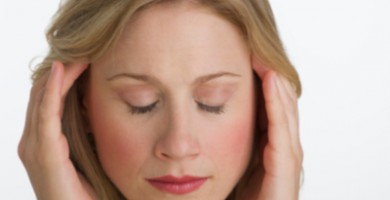Migraine & tension headache are some of the common causes of time off from work leading to decreased productivity. Neck pain and muscle tension are common symptoms of a migraine attack. Now it is well recognized that headache can be a manifestation of neck disorders. For many people, headache starts as pain or tension at the top of the neck. As the pain worsens, it may spread to the back of the head, temples, forehead, or behind the eyes.
Cervicogenic headache is a syndrome characterized by pain in the head referred from the soft tissues or bony structures in the neck. This happens because the nerves in the upper part of your neck are connected to the nerves in your head and face. The symptoms of tension type headache and migraine are similar to cervicogenic headache thus distinguishing them can be difficult. However, the headache as a result of migraine and from the neck can co exist in an individual. When treating a headache most people will reach for painkillers. Traditional headache management comes from paracetamol, aspirin or ibuprofen. However, persistent or chronic headache may require an alternative treatment.
Is your headache coming from the neck?
- You sit in awkward postures for the most part of the day.
- Your headache develops when you are sitting in such postures.
- Neck movements increase your headache.
- You have a long standing neck pain.
- There is stiffness in your neck.
- Your neck movements are not free, and you feel the range of your neck movements is reduced.
- Headache which always feels worse on the same side of your head.
- Moderate nonthrobbing pain usually starting from the neck.
- Headache is associated with lightheadedness or dizziness.
- Headache eased by pressure to the base of the skull.
- There is only marginal effect of drugs you have been taking for migraine.
- If you fall in 3 or more of the following categories then there are chances that your headache is coming from your neck. Also, migrainous and cervicogenic headache (arising from the neck) can co exist.
Managing Migraine and Tension Headache.
- Watch your posture at work – sitting in an upright posture with chin tucked in, feet supported firmly on ground and shoulders held back is extremely important. Poking chin increases pressure on the nerves in the cervical spine and thus causing headache.
- Take frequent breaks – maintaining a posture for a long time stresses the muscles and joints of that area. Thus after sitting for a long time take a walk which would relax the muscles, decreasing the chances of developing headache while at work.
- Regular exercise – walking, jogging, swimming, cycling improve blood circulation, wash away toxins and other pain causing metabolites and thus restoring a state of health. Flexibility exercises – sitting in one posture for most part of the day leads to tightness in the neck muscles. These tight muscles then increase the pressure on the nerves causing headache. Thus a program of stretching these tight muscles is effective in reducing the chances of developing neck pain and thus headache.
- Strengthening exercises – for the muscles around the neck, scapula, and shoulders are effective in distributing the loads and thus reducing the stresses on the neck.
- Musculoskeletal treatment – this involves “hands on” treatment, mobilization of joints to increase the mobility of joints in the neck, thus reducing the incidence of headache. Soft tissue manipulation hands on treatment to relax the tight musculature and increase the length of soft tissues around the neck.
- Gentle neural mobilization – increases the mobility of the nerves around the neck thus reducing any excessive tension around the neck area. Mobility exercises for the neck help in maintaining and enhancing the range of motion around the neck, decreasing stiffness and thus chances of headache.
- Electrotherapy – use of various electrical modalities is helpful in management of acute symptoms. Relaxation techniques – breathing exercises, Jacobson’s progressive relaxation techniques help in reducing stress and tension. This leads to enhanced psychological and social well being.
- Reiki – A spiritual healing method helps in positively energizing the body, thus restoring a state of healthy body, mind and spirit.
Cervicogenic headache is a relatively common cause of chronic headache that is often misdiagnosed or unrecognized. A multidisciplinary approach to treatment is the most effective way of dealing with such problems. Migraine and tension headaches can also relieve from physiotherapy by relaxing the muscles around the neck.

